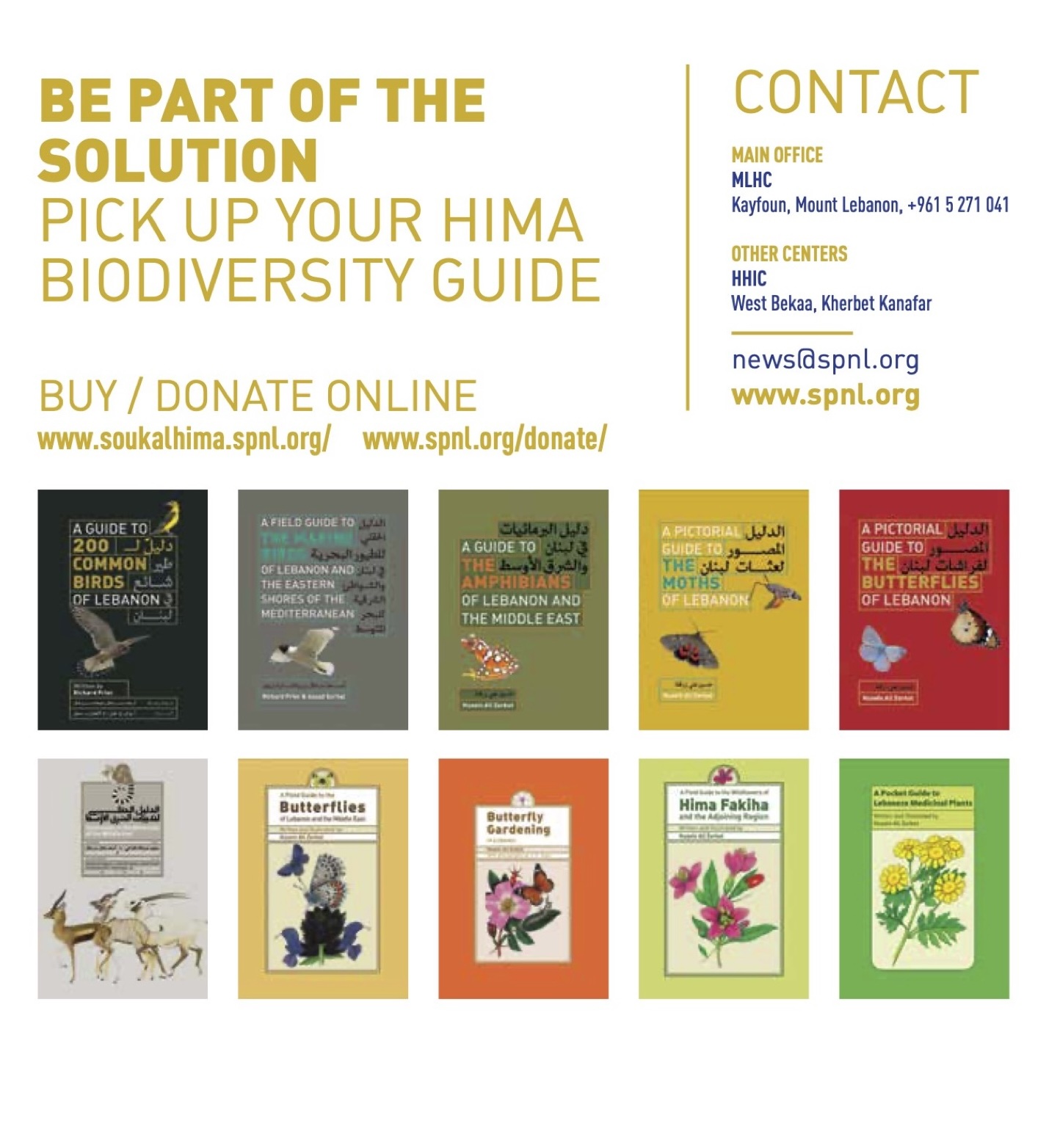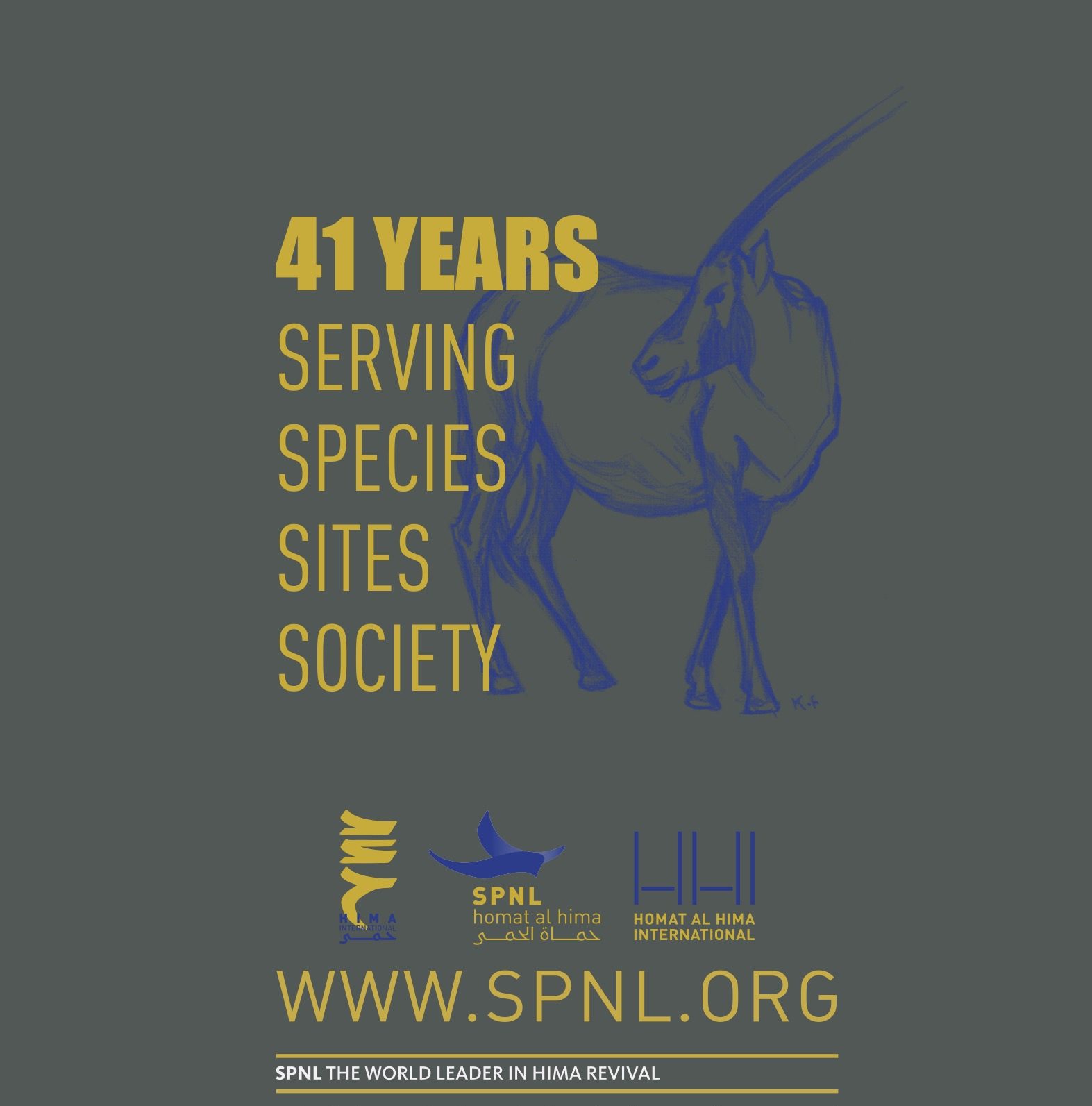Strengthening Lebanon’s Nature Network: Field Highlights from September – October 2025
October 2025 unfolded as a month of remarkable coordination across Lebanon’s Hima network, reflecting SPNL’s integrated vision of conservation, community, and connectivity. From mountain ridges alive with raptor migration to wetland basins where data collection deepened ecological understanding, the Society’s field and technical teams advanced multiple projects under the BioConnect, DIMFE, SDC, Al Murunah, and related frameworks.
Watching the Skies and Wetlands
Field ornithologist Chadi Saad spent the season tracing the autumn migration from Anahita Raptor Viewpoint in the Mount Lebanon range through Hima Hammana, Ammiq Wetland, Lake Qaraoun, and Mansura. Over seven weeks he submitted 24 eBird checklists documenting more than sixty species. Highlights included large flocks of Black Kite (32), a Steppe Eagle, Bonelli’s Eagle, and the graceful Black-winged Kite, together with a vivid mix of waterfowl and passerines—Great White Pelican, Northern Lapwing, Green-winged Teal, Bluethroat, and Willow Warbler among them.
These observations contribute to BioConnect’s citizen-science baseline, confirming the Bekaa Valley’s role as a keystone stop-over on the African–Eurasian Flyway. Saad also engaged local watchers and visitors at Hammana and Anjar, using the migration spectacle to promote awareness against illegal hunting and to connect youth with conservation values.
Mapping, Databases, and Community Science
Miryam Salloum coordinated data-driven work linking biodiversity to community livelihood studies. She finalized the Kherbet Qanafar–Ain Zebdeh Bird Monitoring report, updated SPNL’s plant-and-bird databases, and advanced mapping with Bilal Al-Alaouiyeh of the Litani River Authority (LRA). Her month bridged citizen-science outputs with field surveys on dairy-factory pollution in the West Bekaa, data crucial for the DIMFE program tackling industrial effluent and wastewater reuse.
Salloum also joined the Anti-Poaching Unit (APU) in Eghbe for a field exercise, linking biodiversity monitoring to law-enforcement collaboration, and supported design work for educational signages that will soon appear along eco-trails. Meetings with the ACE project and municipalities of Ras El Metn, Btekhnay, and Qornayel advanced signage and charter commitments for new Hima sites.
Strategic Coordination and Project Integration
At the programmatic level, Bassima Khatib, Head of Nature Conservation, led cross-project management and donor liaison. Under Al Murunah and Murunah+, she oversaw planning for the national policy dialogue on climate resilience and coordinated field sessions introducing the Hima approach in Qaa, Ersal, Fakiha, and Ras Baalbeck. For BioConnect, she followed up on delayed EU approvals, reviewed the Hammana Hima Management Plan, and supervised final activities for the travelling exhibition.
Khatib’s portfolio also covered the APU’s fight against illegal bird killing, the AFD2/PROZHUM wetland initiatives, and new collaborations under the SWISS and DIMFE projects. Her leadership emphasized financial closure, monitoring-framework revisions, and the preparation of RFPs and municipal decisions needed before project completion. Parallel meetings with the Ministry of Environment and the Lebanese Reforestation Initiative prepared the roadmap for declaring Lebanon’s upcoming Natural Park and for formalizing joint reforestation efforts.
DIMFE and SDC: Freshwater Restoration and Natural-Park Foundations
Field coordinator Wassim El Khatib focused on the DIMFE and SDC components in the Bekaa and Upper Matn .Through multiple visits he introduced DIMFE to five municipalities, inspected two dairy factories, and met LRA representatives at the Qaraoun water-treatment plant. The project aims to restore the ecological health of the Litani River and Qaraoun Lake through pollution reduction, wastewater reuse, and community-based conservation under the Hima model.
Under SDC, Wassim assisted the launch of Hima Kfarselwan and organized coordination meetings with municipalities of Ras El Matn, Btekhnay, Hammana, Hlailieh, and Qornayel in preparation for the Beirut River Valley Natural Park. These engagements strengthen local ownership while linking high-mountain Himas to watershed restoration in the Bekaa below.
Capacity Building, Gender, and Cross-Project Synergy
Fatima Hayek integrated the social and gender dimensions across SPNL’s projects. Under Al Murunah +, she delivered four Nature-based Solutions (NbS) training sessions in North Bekaa villages—Ras Baalbek, Qaa, Fekha, and Arsal—reaching some 200 participants. These sessions empowered farmers, women, and youth to apply water-harvesting and flood-control techniques that boost climate resilience.
She also coordinated with IUCN, IWMI, and ABAAD on upcoming policy and economic-empowerment dialogues, while supporting SDC’s Hima Qornayel event, DIMFE’s stakeholder mapping, and BioConnect’s fishermen training at Kayfoun. Her report underscores the team’s inclusive approach—linking environmental goals with gender equality, local livelihoods, and academic collaboration, including outreach to Dr. Mona Harb at AUB for research partnership.
Shared Momentum and Next Steps
Across departments, the reports converge on a clear set of priorities for November 2025:
-
finalize and analyze bird- and plant-monitoring databases;
-
advance DIMFE’s baseline assessments and stakeholder workshops;
-
continue BioConnect’s Hima Management Plan development and community engagement;
-
prepare the national policy dialogue under Al Murunah; and
-
draft proposals and concept notes for new donor calls with DIMFE, LRI, and B&Z organizations.
A Network in Action
Together, these October field and technical achievements capture SPNL’s dynamic conservation model—one where data feeds strategy, municipalities join hands with researchers, and each Hima site becomes a living classroom. Whether tracking kites over Mansura, charting pollution sources in the Litani, or training youth in flood-resilient farming, the teams of Saad, Salloum, Khatib, El Khatib, and Hayek are writing Lebanon’s next chapter of community-driven biodiversity protection.






